What is the Sudbury 2050—Urban Design Ideas Competition?
A progressive competition that is being led by the McEwen School of Architecture (MSoA) in collaboration with the community. It is a competition, that offers the opportunity for entrants to think creatively about a city’s complete urban core.
The goal of this Urban Design Ideas Competition is to explore a wide range of options and opportunities for the evolution of the city’s urban core and to ultimately set out urban design principles, that will guide its future development.
This competition challenges entrants to create a new vision for the urban core of the City of Greater Sudbury. A 2050 vision that is far-reaching and one that will serve the city well in a rapidly changing global environment.
Entrants are asked to present their ideas for high-level design solutions for the urban core, reflecting the major building projects being proposed. Possible programs include a new library/art gallery/conference centre/performance centre, new housing typologies for a range of incomes, reimagining the space occupied by the railway lines, and a new arena/event centre – all in the urban core. Entrants are expected to address the placement and urban design issues related to one or more of these programs as part of their integrated “2020 Vision.”
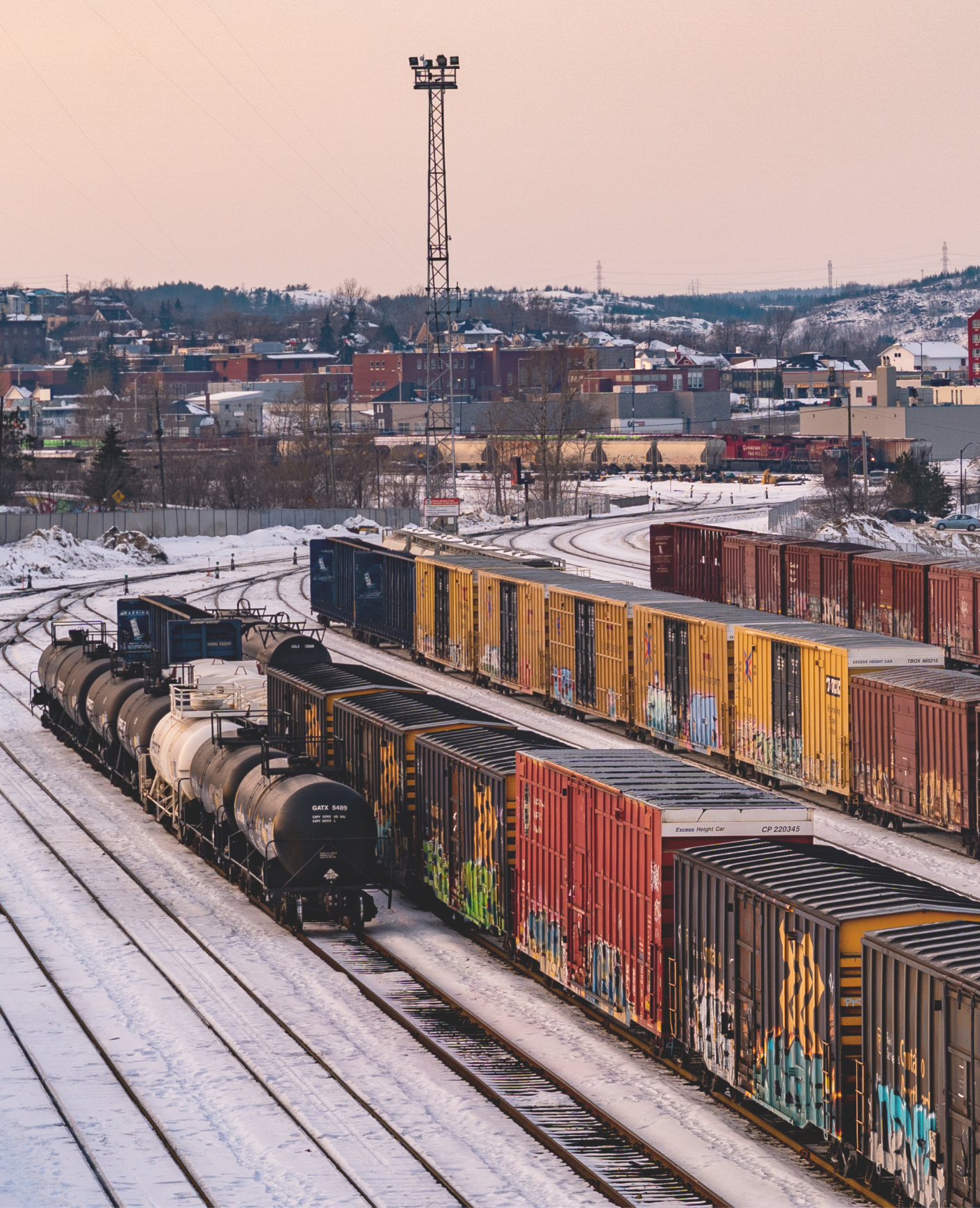
Rail lands in Downtown Sudbury.
At the same time, entrants are challenged to propose the broader context in which the urban core resides – the proximity to Lake Ramsey and its adjacent parks, the connections to greenways and watercourses, as well as the relationship to surrounding neighbourhoods.
A key issue with any urban planning process is developing an approach that engages the public in the design process and encourages them to take ownership of the vision. As part of the submission, entrants are asked to present their strategy for public engagement, with their proposed vision.
Finally, entrants are asked to present their ideas for urban guidelines or principles for use by the City, as it updates the Downtown Master Plan and moves forward into a transformational future.
Prizes will be awarded based on each submission’s innovative and globally conscious contribution to the creation of new ideas for the City – specifically ones that serve a culturally diverse Northern community. Projects will be judged based on their integrated “vision”, creativity, inventiveness, and potential to stimulate public discussion about the urban core of the City.

The skating path on Ramsey Lake is approximately 1.5 km long. Photo by Braedan Martel.
The Challenge
Participants are challenged to present their visions of The City of Greater Sudbury’s Urban Core in 2050.
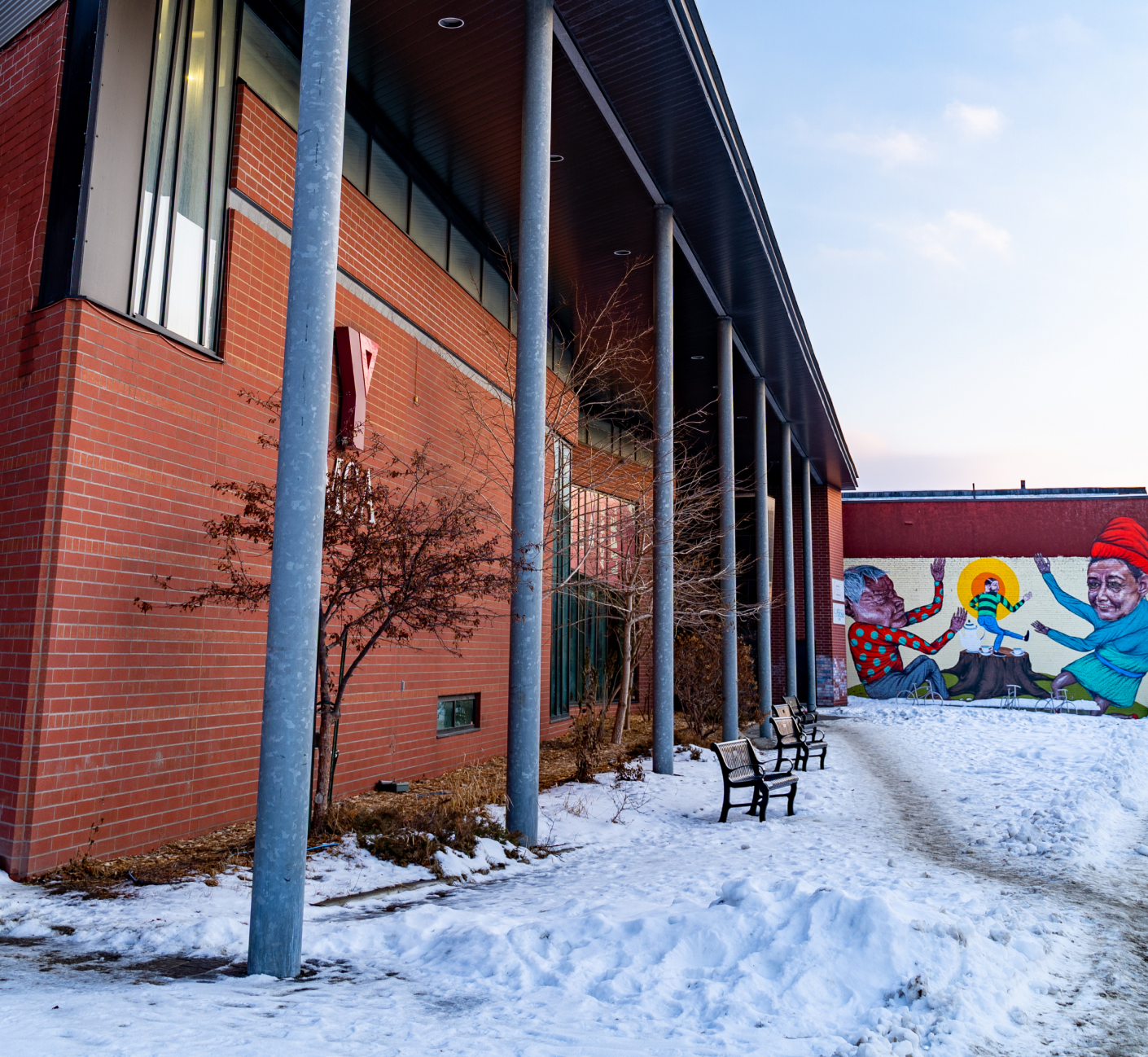
Downtown Sudbury
- Visions for a city set in the extraordinary natural beauty of Northern Ontario – a city with hundreds of lakes, a winter city with a culture driven by Anglophone, Francophone and Indigenous communities.
- Visions for an “international” City, with more than 300 companies exporting intellectual capital and mining products around the world.
- Visions that sustain the City’s ability to continue to attract new generations of the best and brightest talent, with the built form in the urban core clearly reflecting this aspiration. Visions for a vibrant city, open to the world it serves.
- Visions that reflect the city’s position as northern Ontario’s leading healthcare research, education, and economic engine, with an urban core highlighting the creativity and energy necessary to maintain a leadership role.
- Visions that continue to drive the transformational growth of emerging economic sectors such as mass timber construction and remote, automated, electrified, sustainable mining technologies.
- Visions that reflect the fact that Sudbury is an international economic and environmental miracle. The City’s economy has recovered from massive mining layoffs and its environment has been transformed with re-greening and regenerating strategies.
- Visions that reflect and challenge the City’s aspirations to respond to the ongoing challenges of climate change and the City’s “climate emergency”.
What better way to re-vision a city than starting with its urban heart?
The Place
Sudbury, Ontario, Canada occupies a crater formed by the impact of a meteorite, 1.8 billion years ago.
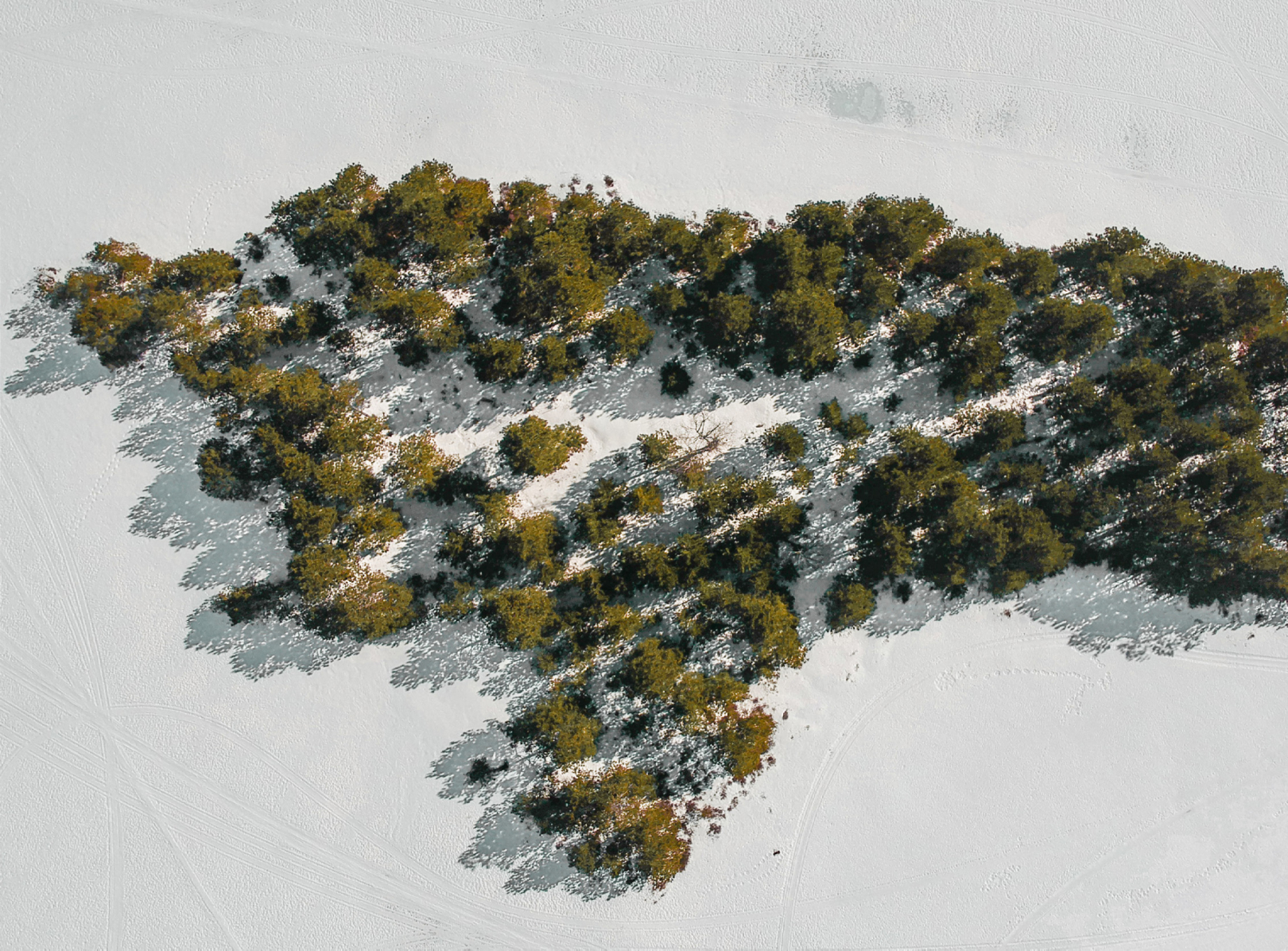
Winter on one of Sudbury’s many lakes.
With the impact of the meteorite came the presence of copper, platinum, palladium, and gold, but most significantly nickel. Sudbury traditionally boasts having the title of the “Nickel Capital of the world”. Mining and its related industries were, and still are, major drivers of the local economy. Historically, the mining industry attracted people from all over the world and has resulted in the city’s diverse community – a city that became home to many different cultures, dating back to the early 1900s.
The miracle of the mining cluster that exists in Sudbury is its major sociological and competitive advantage. Thousands of young digital workers are inventing new products every day, with the enterprise to export them around the world.
Sudbury was a mining camp, but today it is a research, innovation, and entrepreneurial capital. Sudbury has matured into a diversified regional urban centre and has become the focus of industry, education, government and health services for Northern Ontario.
The city’s natural setting reflects the iconic northern Canadian landscape. 16.5% of the city is covered by freshwater. The city contains the two largest lakes in the world within a single city’s boundary – Lake Wanapitei and Ramsey Lake. The presence of abundant water features supports many natural habitats, ecosystems, and wildlife. It also provides recreational and unique travel opportunities for residents of the city. The community takes pride in using its lakes year-round, through watercraft, ice hockey, skating, and fishing.
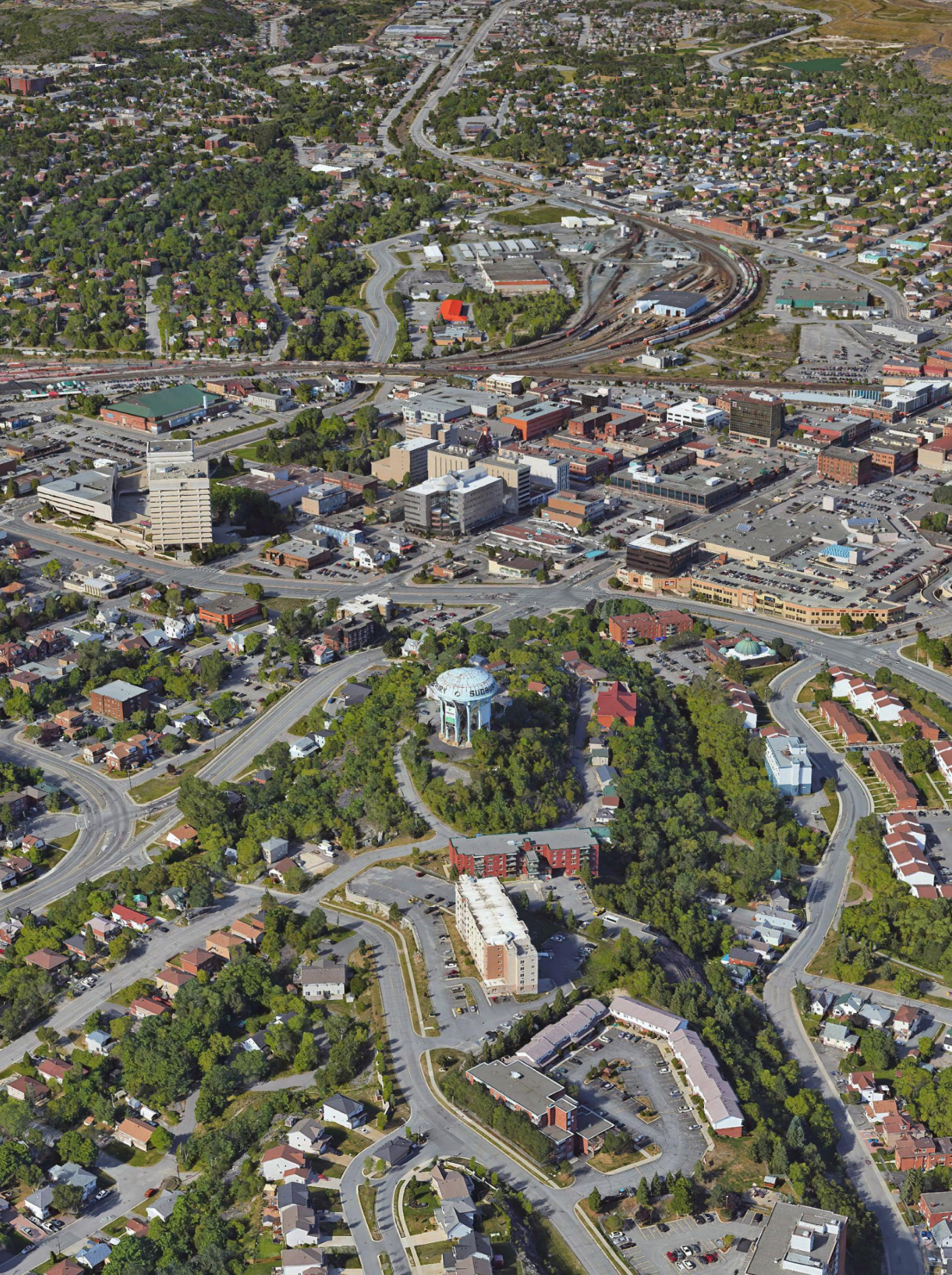
Photo: Google

All photos by Curtis Williamson, CurtWillPhoto unless credited otherwise.
The Urban Core
Greater Sudbury’s urban core represents the origin of the community. In its early years, for the booming mining industry, it was the place to live, shop, govern, celebrate, worship and entertain.
As with many mid-sized North American cities, the urban core has gone through profound changes in recent decades. Retailing has moved to suburban shopping centres, big-box retail, and electronic shopping. Many local independent retailers either left the downtown core or closed entirely. Faced with vacant space at both street level and upper stories, the deterioration of the downtown has contributed to a negative overall image and declining tax revenue.
The city; however, is constantly working to revitalize its core. One of the newest additions to the downtown core was the McEwen School of Architecture (MsoA), which opened in 2013. One of the goals of that project was to revive the urban core and act as a catalyst for economic growth.
The Community
Greater Sudbury’s most unique characteristic lies in its people. Home to Ontario’s highest concentration of indigenous and francophone cultures, the city is one of the most diverse communities in the province.
The community takes pride in its arts culture. A diverse range of artists, specializing in visual arts, crafts, music, photography, culinary arts, and theatre, are active in the city. There is a growing interest in promoting these activities in the urban core. Current examples include the new Place des Arts scheduled to open in 2020. Library, Art Gallery and Conference facilities are also being advanced. A creative, entrepreneurial cafe culture has rapidly emerged since the City’s investment in the McEwen School of Architecture. Increasing numbers of emerging arts businesses and mining technology service providers are moving to the core.
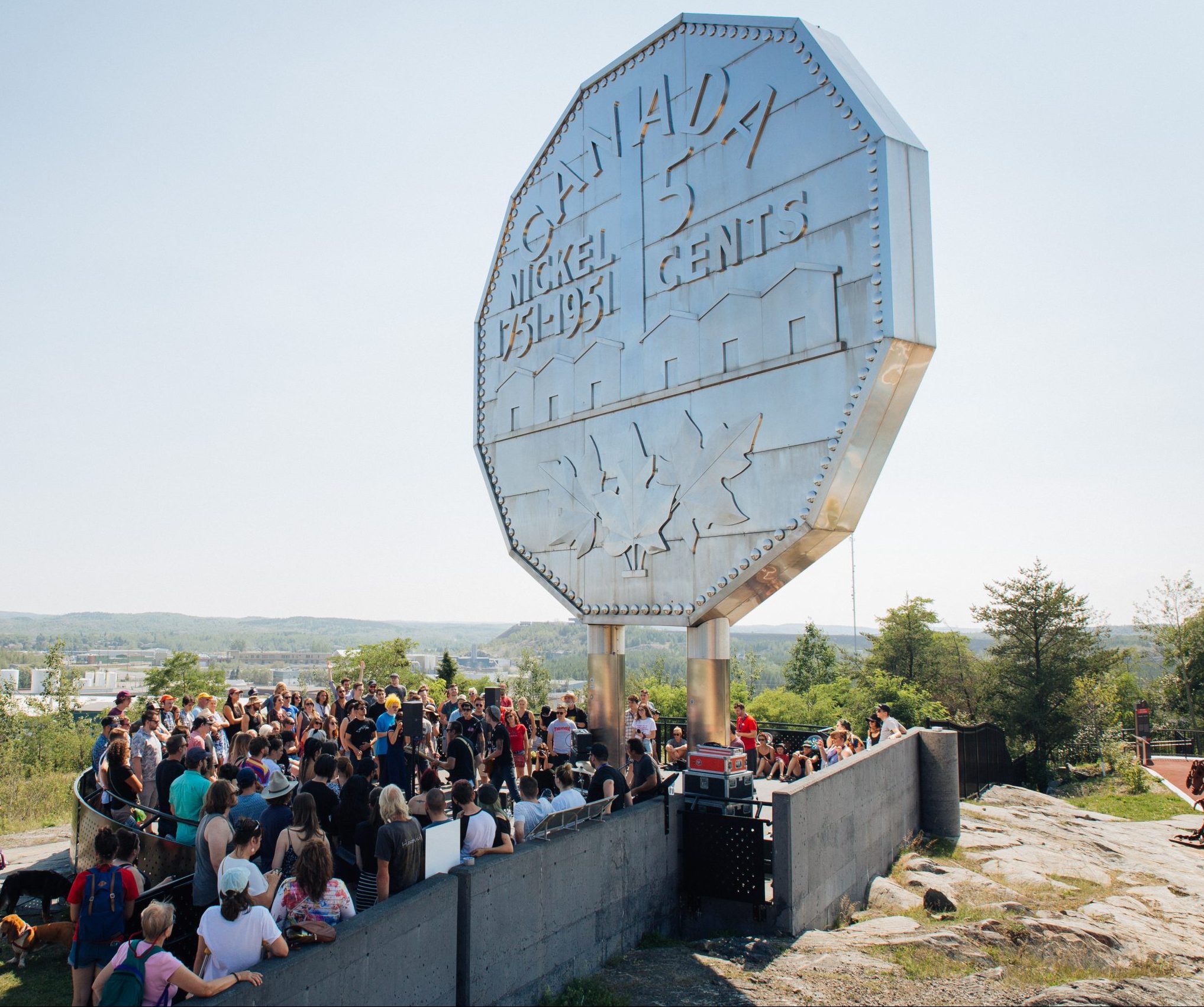
Pop-up concert under the Big Nickel during Up Here festival. Photo by Vanessa Tignanelli.
Design Issues
The City of Greater Sudbury is on the verge of major change.
The City is working on many fronts to strengthen its position as the Northern Ontario centre for mining technology innovation, health research, governance, finance, retail and entertainment services, and higher education.

The climate change emergency
Recently, the city has declared a climate change emergency and is in the process of developing a strategy for reducing the community’s carbon footprint. A Community Energy and Emissions Plan (CEEP) has been initiated, with the goal to be substantially reliant on renewable energy, with zero carbon emissions by 2050.
How will this Plan impact a vision for the urban core?
Regenerative design
Ideally, any new vision for the urban core should go beyond zero net energy goals to a point where the result is positive net energy—any development must give back more than it consumes.
How will that goal be reflected in City’s vision?
Mass timber
Wood is not something to use and throw away or burn. It is a flow of wealth produced by our forests and a legacy we leave our children. Wood is something we in the North contribute to the world, and there is a need to help the world learn to cherish it.
How can the Northern Ontario forestry industry contribute to the adaptations related to climate change and the expanding use of mass timber in construction?
Culture
A celebration of its many cultures and the natural beauty of the region is also transforming the community, as a destination to live, work and play. This is critical to maintaining and attracting the talent necessary to the city’s innovation industry.
Entries should be sensitive to the multicultural character of the community and particularly, the role of indigenous knowledge in this creative process.
Proposed projects for the urban core— $300 million
The City is in an unprecedented position of having an impressive roster of new building projects being proposed for the urban core: a relocated main Library, a relocated Art Gallery, a new Convention/Performance Centre, associated hotel and parking structures, as well as major residential developments.
Additional to those projects, a new Arena/Event Centre is presently proposed for a location outside of the urban core; however, there have been several appeals related to that decision. In the context of this Ideas Competition, entries should reflect the potential for that project to be located in the urban core.
Each of these projects prompts complex questions related to urban infrastructure, design and architecture.
How can the City capitalize on this, “once in a lifetime”, investment in community development?
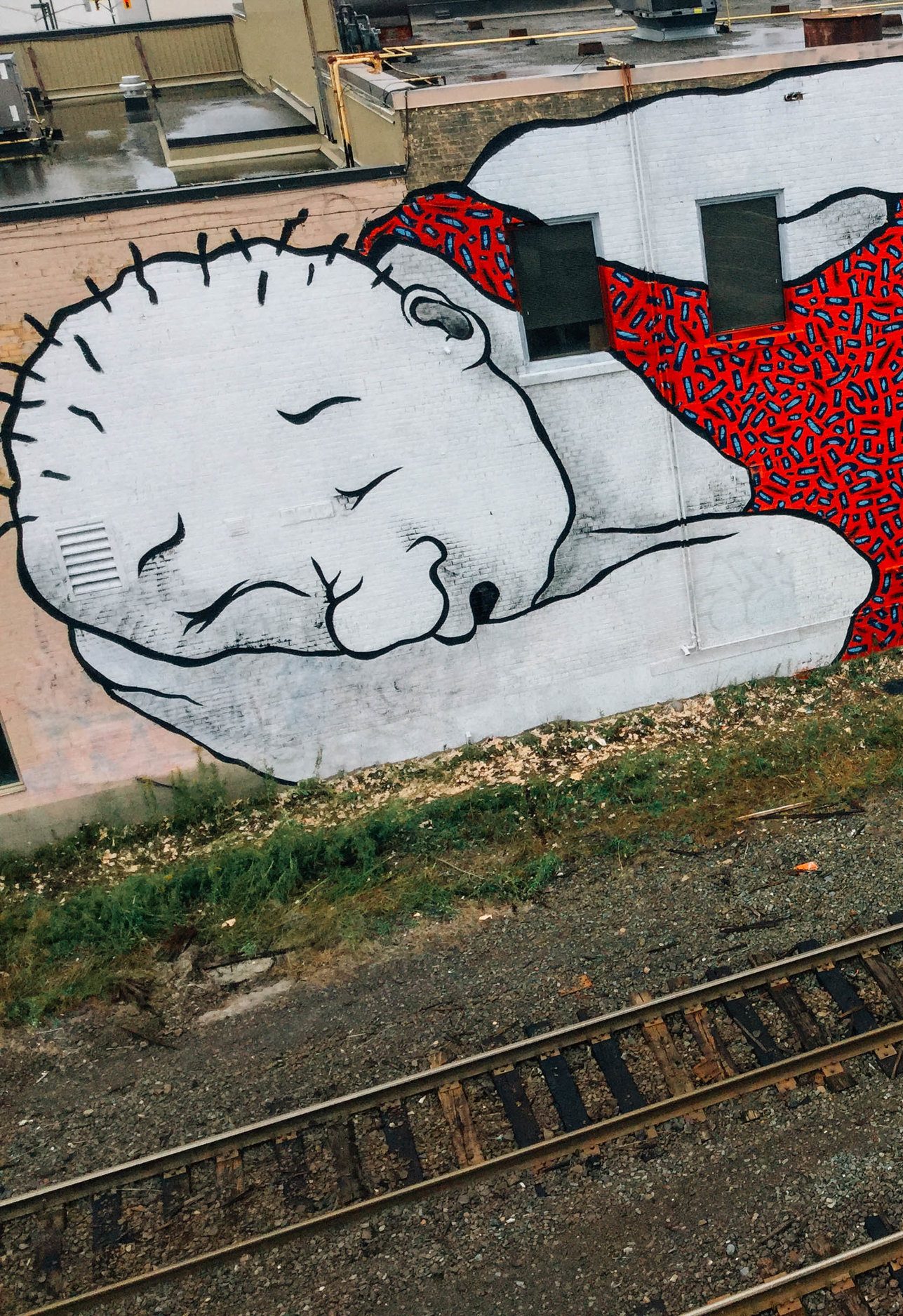
Mural by French artists Ella & Pitr along railroad tracks in downtown Sudbury. Photo: Ella & Pitr.
Housing
An urban core needs people living there in order to be successful, vibrant and safe. This has been recognized for many years and many residential projects are being planned for the urban core. Innovation industries are very interested in locating in the urban core and they are appealing to the talented young people of that industry – people who want to live and work in the urban core. The core must provide the creative workspaces, mixed use developments and supporting tax strategies to make this happen.
What vision demonstrates the affordability and lifestyle necessary to attract people to live in Sudbury’s urban core?
Adaptive reuse of existing buildings
The development of the proposed projects will potentially vacate buildings, such as the existing Main Library and the existing Community Arena.
How can these existing buildings be adapted and regenerated, for the benefit of the community, as an overall strategy for repurposing buildings?
The rail lands
The City’s urban core has been shaped by the surrounding landscape and the presence of substantial rail lands infrastructure. Historically, and again more recently, there has been discussion and analysis regarding the potential to relocate the majority of the Canadian Pacific (CP) rail lines and repurpose the rail lands for community development.
How does this opportunity fit with a new vision for the urban core and related regreening strategies?
Regreening
2018 marked the 40th anniversary of the City of Greater Sudbury’s Regreening Program which has focused on rehabilitating Sudbury’s landscape and watersheds. From 1978 to 2017, over 3,400 hectares of land were rejuvenated and over 9.7 million trees have been planted. The City of Greater Sudbury’s regreening efforts have received recognition throughout the community, province, country and internationally.
How should the next stage of regreening occur in the City and particularly in the urban core? What is the next re-greening miracle 2.0?
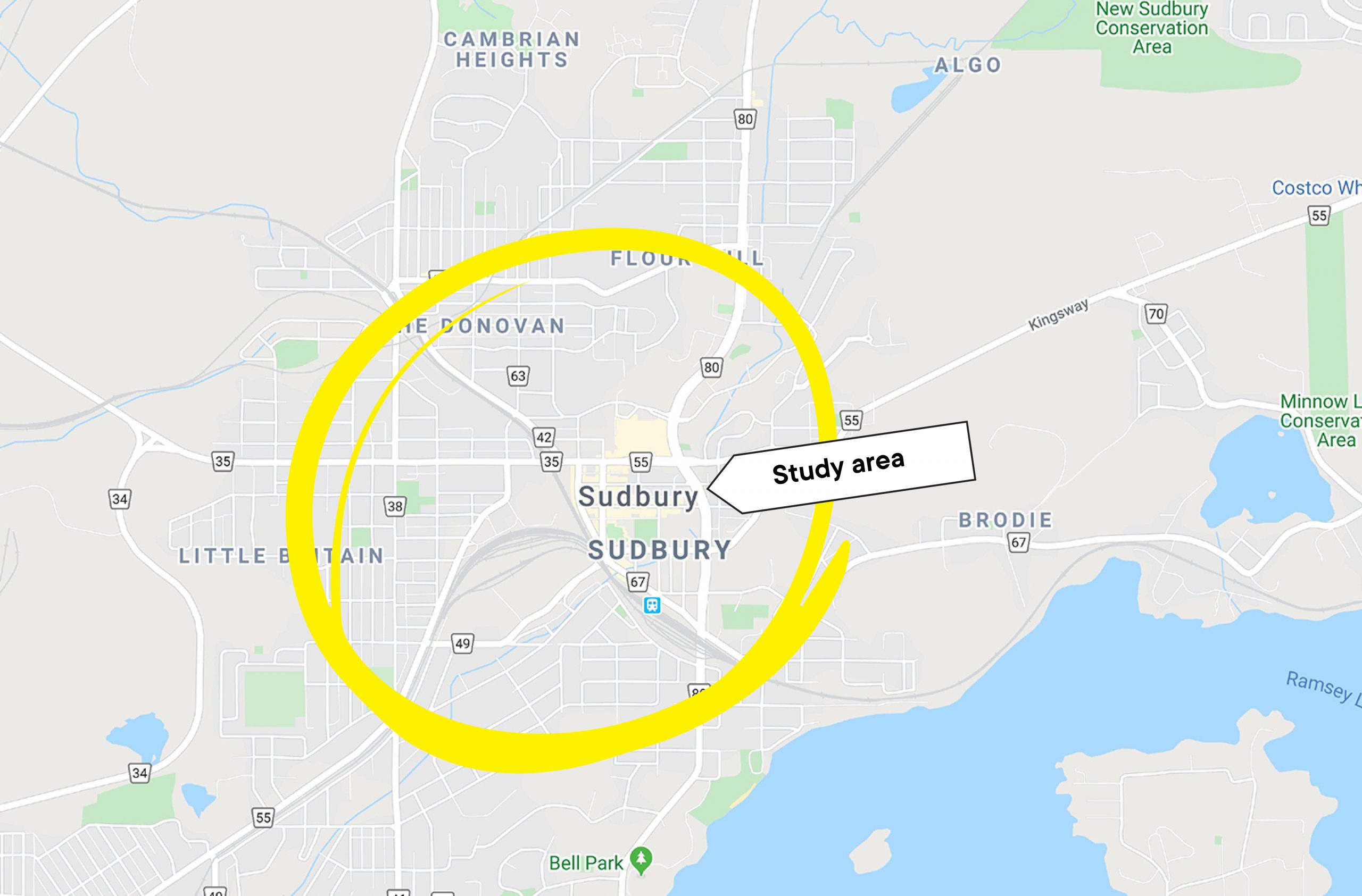
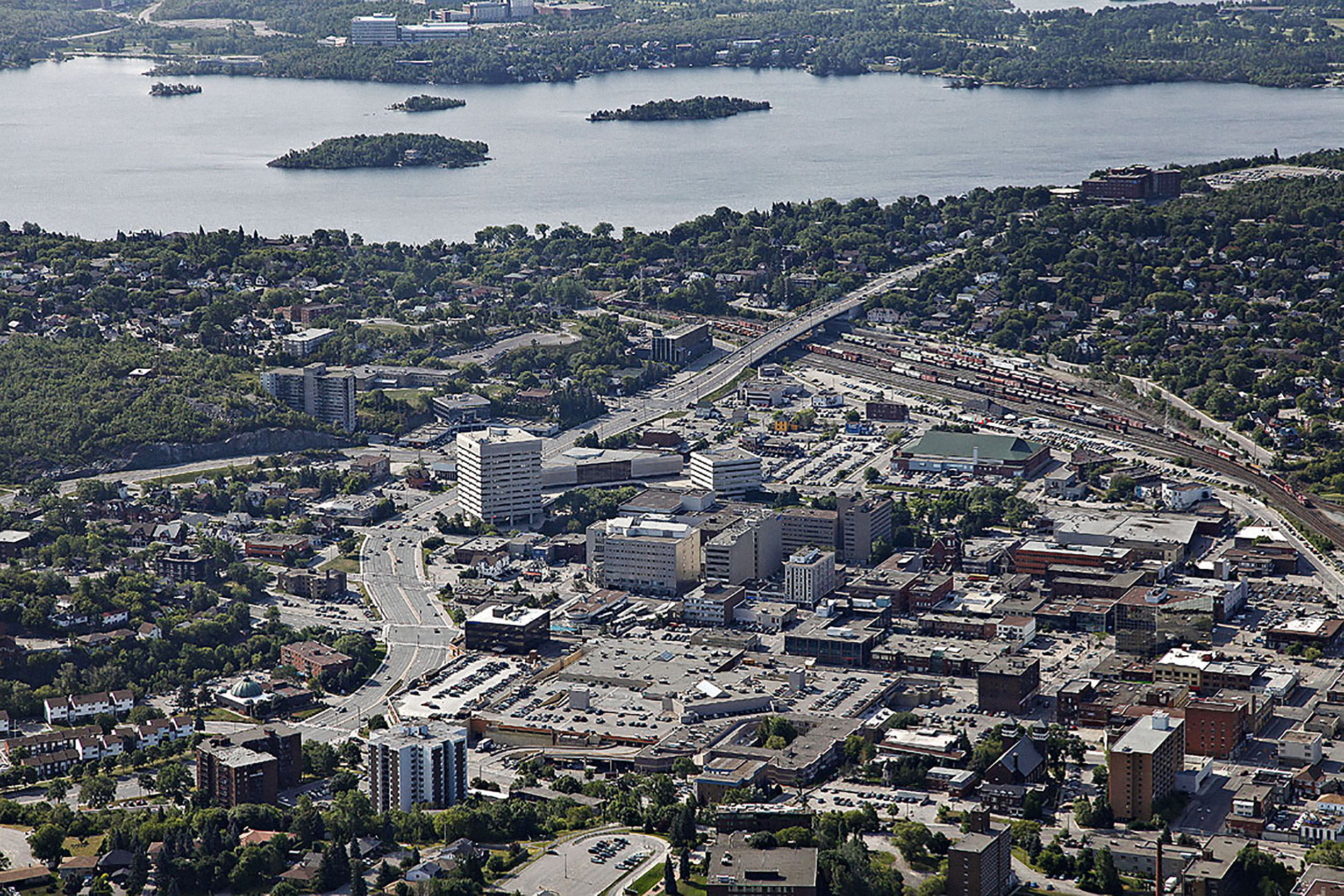
Aerial view of Sudbury's urban core.
The Sponsor
The McEwen School of Architecture (MSoA) at Laurentian University is a significant centre for research, design and building in the North, with design studios provided in both French and English.
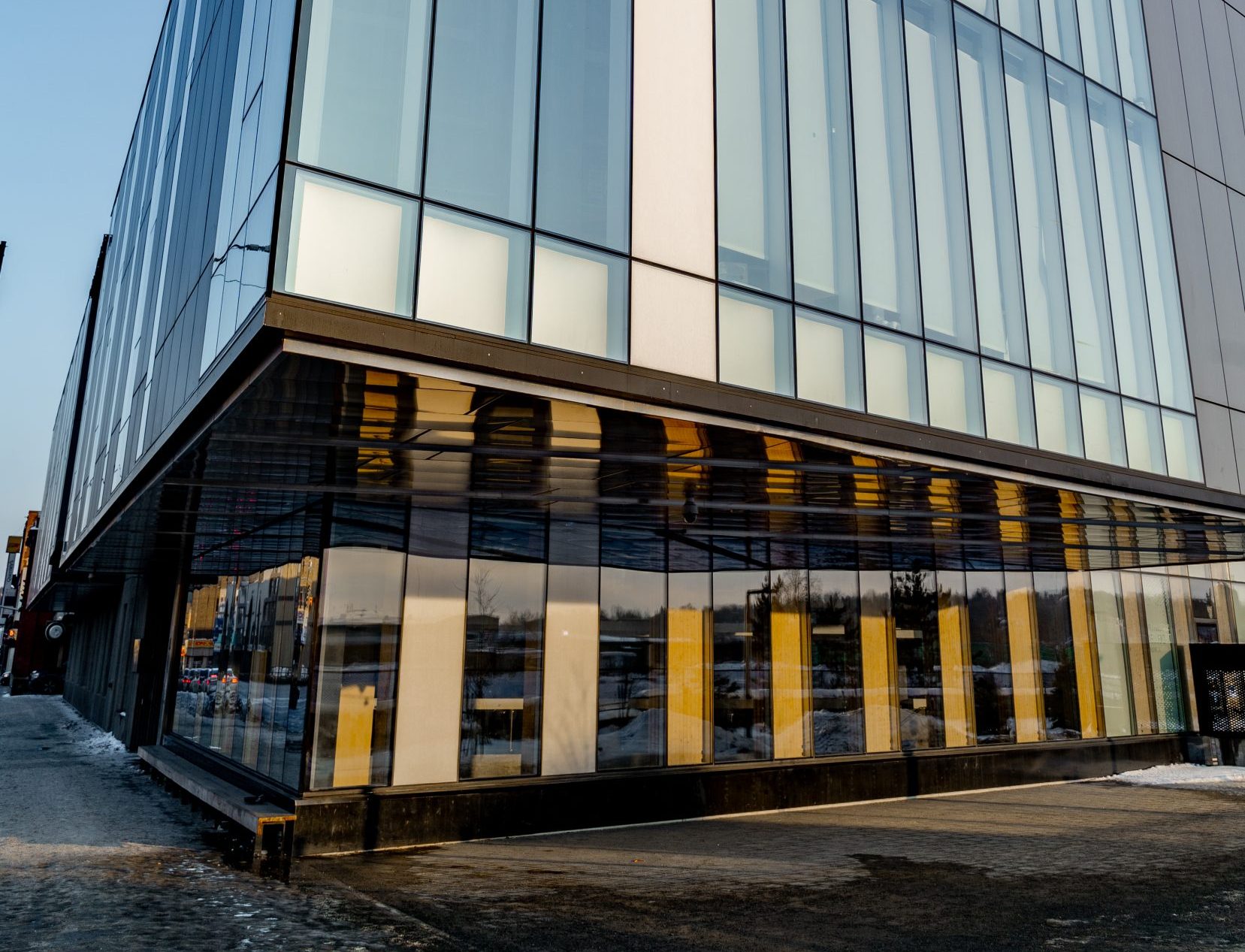
The MSoA’s body of work in Northern communities in Ontario, Canada and around the world has added deep knowledge about celebrating community through architecture and urban design, in remote and challenging parts of the planet. This has been exemplified through respectful engagement with Northern Indigenous communities.
The relationships that the MSoA has nurtured with northern communities in Ontario, Canada and internationally – particularly with indigenous communities – have provided future knowledge about how to live, design and build well in environmental circumstances that are often complex and challenging. This growing body of expertise is now offered through a proposed set of events designed to demonstrate the way in which
the respectful yet critical study and appreciation of a place and community over time can yield strategies for urban design and architecture that are resilient, enduring, regenerative, and celebrate life in the North.
The McEwen School of Architecture (MSoA) is the proud sponsor of the Sudbury 2050 Urban Design Ideas Competition, with the support of the McEwen International Advisory Board.

Frequently Asked Questions
Get quick answers to frequently asked questions. We will be updating our Frequently Asked Questions section as questions arise.
